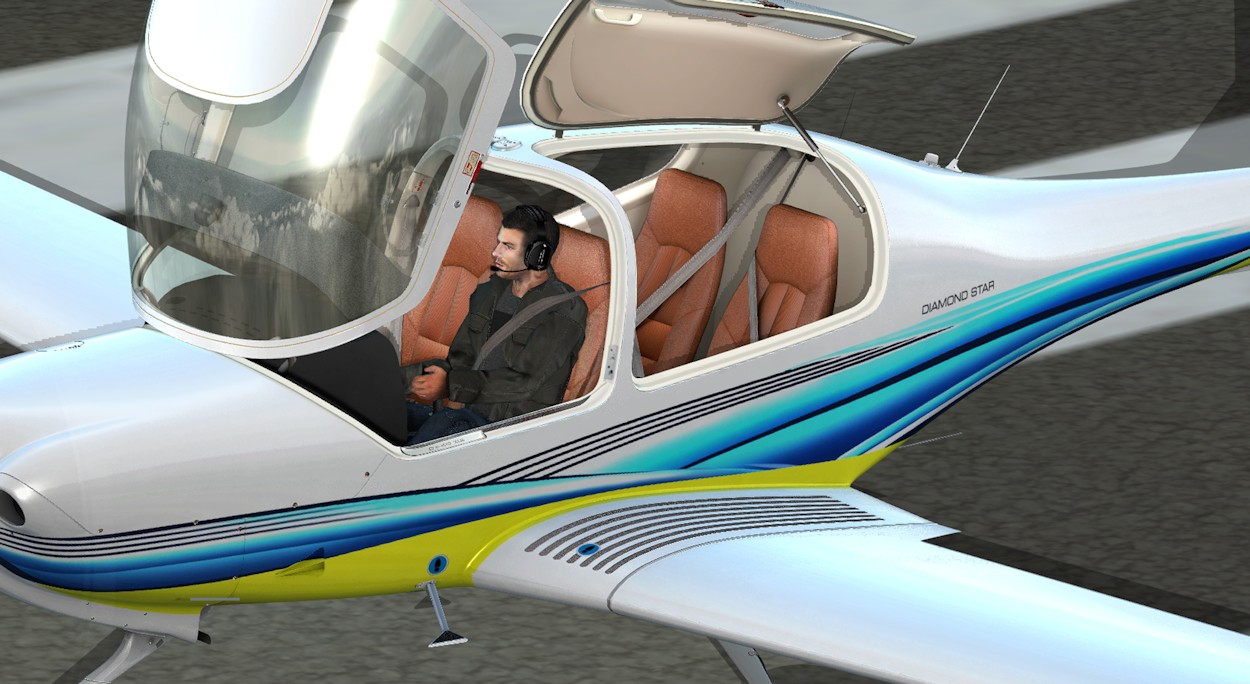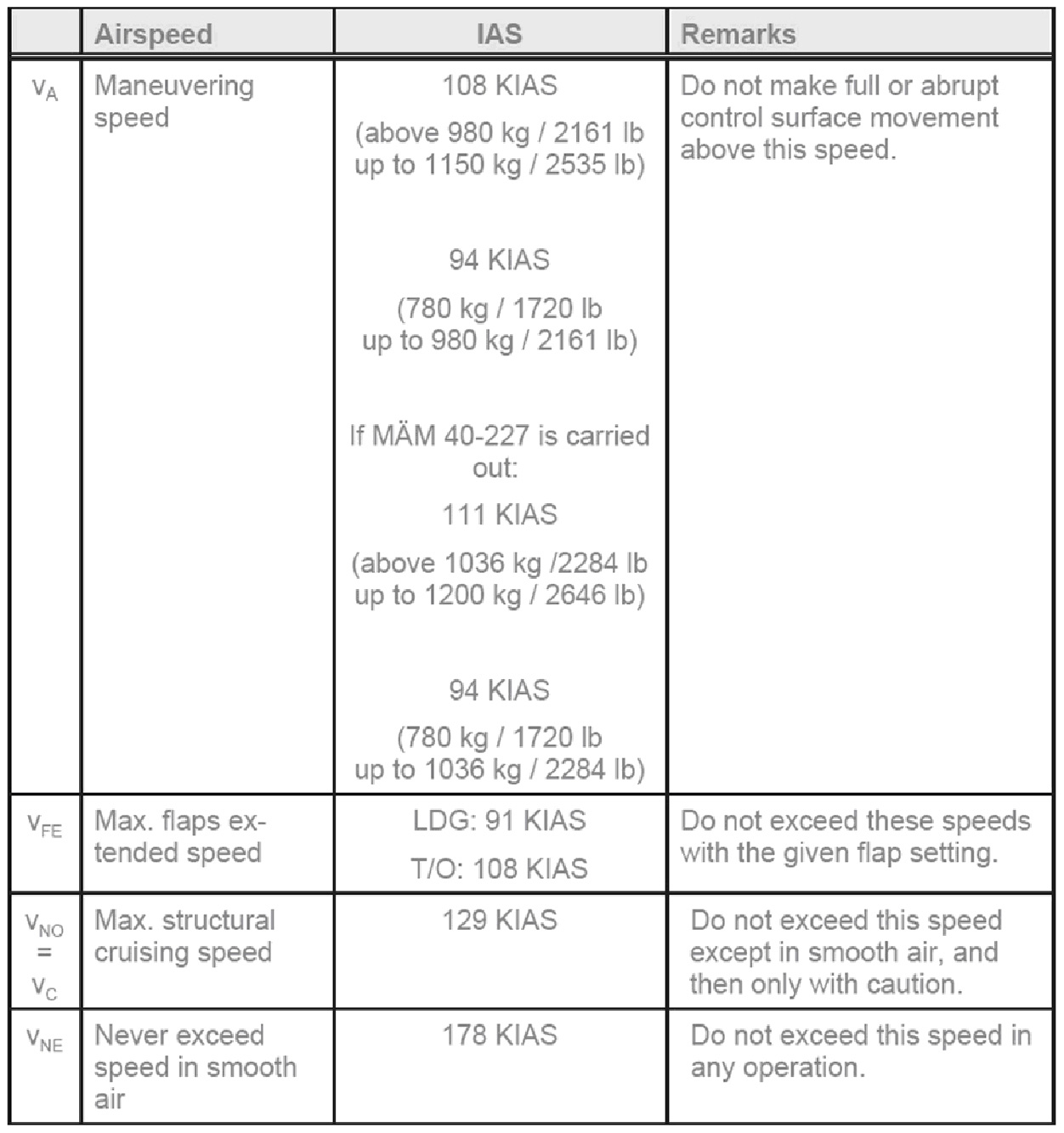Mutley's Hangar
A Haven For Flight Simulation Enthusiasts!

For FSX/P3D/P3DV2 Published by Alabeo
Reviewed by Brian Buckley
October 2014
Introduction
The Diamond DA40 is an Austrian four-seat, single engine, light
aircraft constructed from composite materials. Nowadays, it is built
in both Austria and Canada and it was developed as a four-seat
version of the earlier DA20 by Diamond Aircraft Industries.
Alabeo have continued in the vein in which they started, which is,
as the sister ship to Carenado. They have once again produced an
aircraft of such quality and style in the DA40, it leaves you in no
doubt as to who is responsible. Although there is quite a stern
warning on the cockpit dashboard stating that all aerobatic
manoeuvres, including spinning, are prohibited, the DA40, for all
intents and purposes, looks a smart little sports plane. The proof
will be in the testing!
History
The DA40 was built following the success of the former DA20, which
was a two seat aircraft. The DA40 was initially marketed as the
DA-40-180, powered by a fuel injected Textron Lycoming IO-360 M1A
engine.
Operational History
The DA40 has accumulated a very low accident record, particularly
with regard to stall and spin accidents. Its overall and fatal
accident rates are one eighth that of the general aviation fleet and
include no stall related accidents. The level of safe operation is
attributed to its high aspect ratio wing, low wing loading and
benign flight characteristics. The aircraft can be trimmed full nose
up, engine set to idle, and it will descend at 600 - 1200 ft/min at
48 kts (89 km/h) hands off. This is a lower rate of descent than the
competitive Cirrus SR22 can achieve with its airframe ballistic
parachute deployed.
In a 2011 analysis by Aviation Consumer magazine, the DA40 was shown
to have a fatal accident rate of 0.35/100,000 hrs, the lowest in
US general aviation, and considerably better than the Cirrus SR20
and SR22 with a combined fatal accident rate of 1.6/100,000 hrs,
despite its full aircraft parachute system. By comparison, the
Cessna 172 has a fatal accident rate of 0.45/100,000 hrs.
Availability and Installation
The Alabeo Diamond DA40 is available direct from Alabeo, Carenado
and Alabeo resellers as a 'download only' product (some resellers
also offer a master back-up CD / DVD service for a minor additional
cost). The current price for the download is £16.56 or the
equivalent in your own denomination. The CD back-up is typically
priced at £4.42. The file size is 212MB, which is fair for a small
GA aircraft and Alabeo suggest having 520MB of hard disk space
available for the DA40.
Installation was very simple taking no more than five minutes from
download to flying.
Features
The DA40 comes with a full complement of avionics and is therefore
suited to either full hands on flying or, if you are on a lengthy
flight, you can enable the very efficient autopilot.
Alabeo lists the inclusions and features as follows:
•Vision Microsystems VM 1000 Engine Instrument;
•Superb material shines and reflections;
•Volumetric side view prop effect;
•Gauges reflections;
•Windows scratches and Blades shines;
•High quality 3D model and textures;
•Realistic behaviour;
•Five HD liveries;
•Blank texture for creating your own designs;
•Two models (one and two pilots);
•Normal Procedures PDF
•Emergency Procedures PDF;
•Performance tables PDF; and
•References PDF.
Appearance
The HD liveries are very stylish and all have modern designs. There
are also quite a large amount of DA40 liveries available on the
internet for free download.
 D-EASV |
|
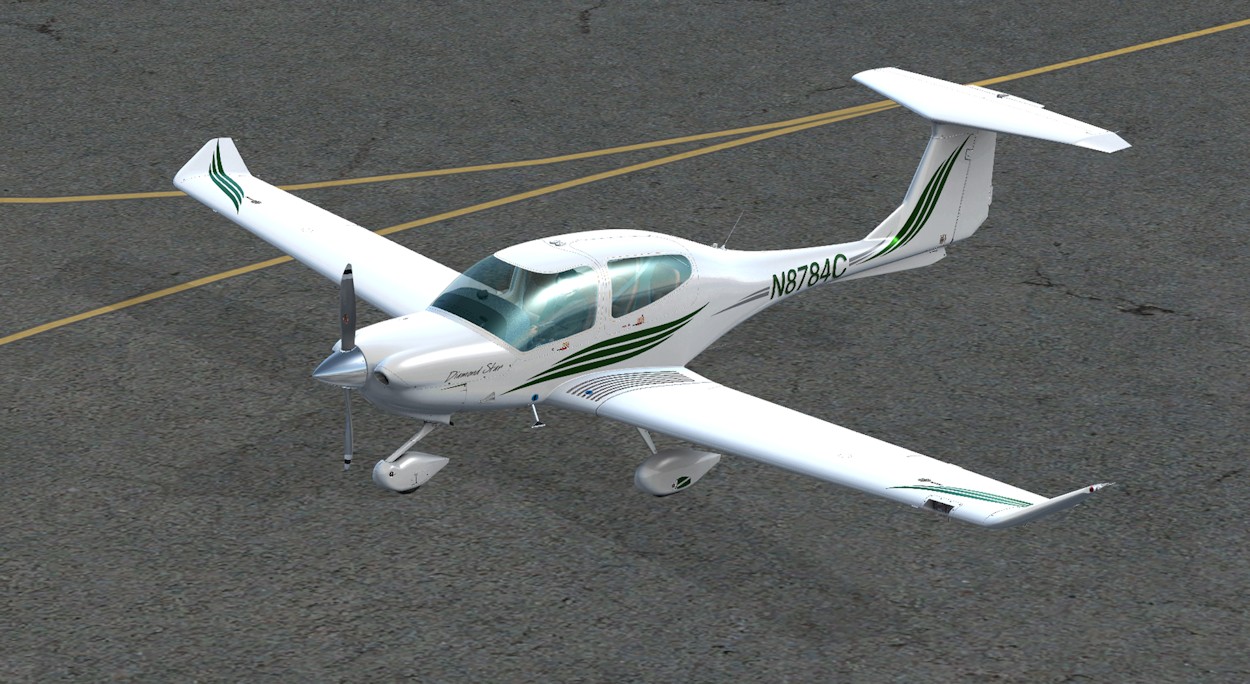 N8784C |
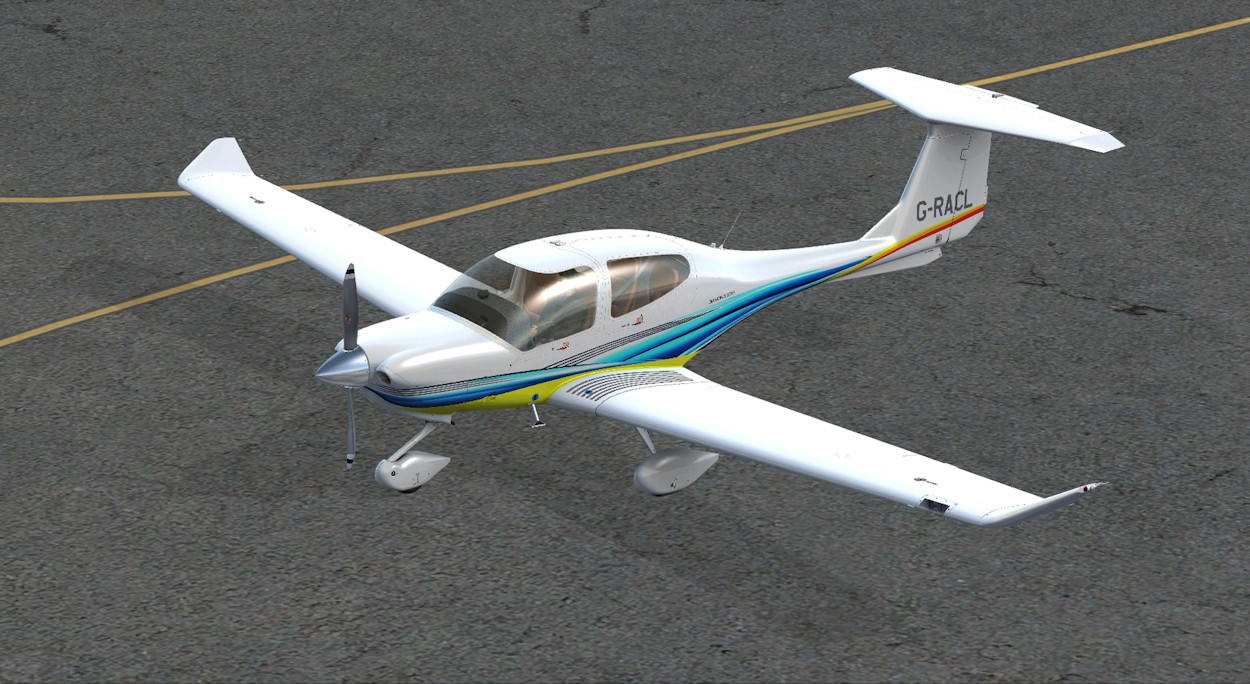 G-RACL |
 N1113E |
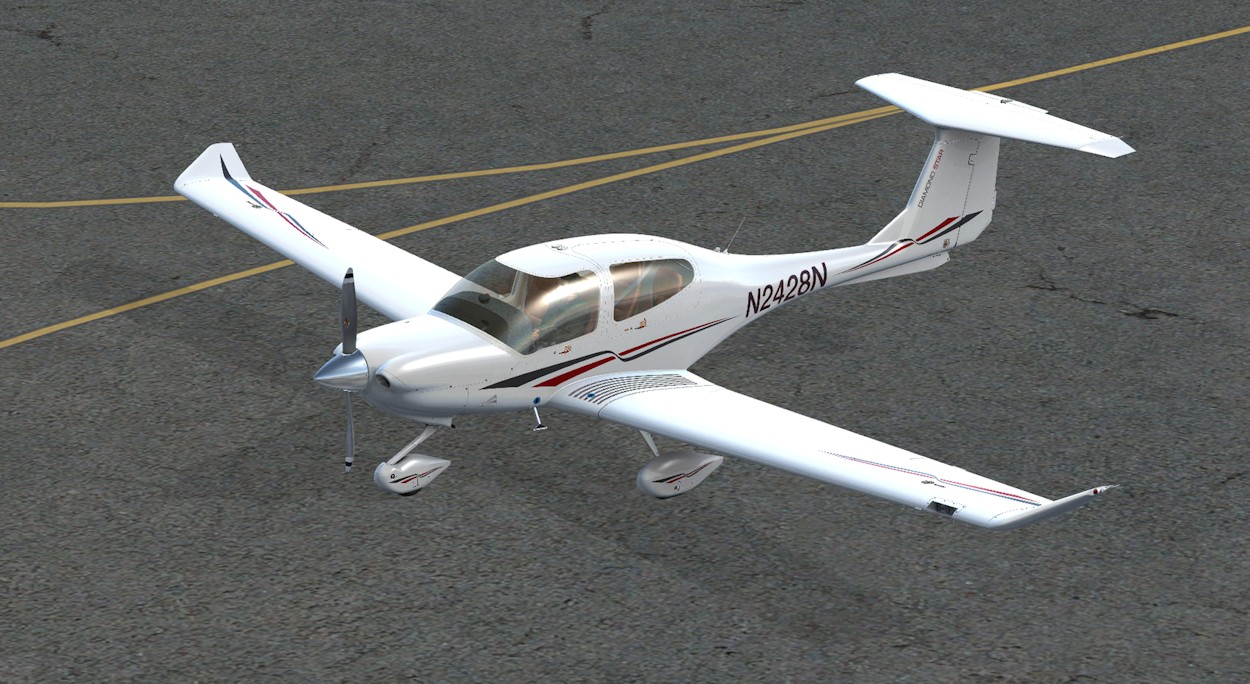 N2428N |
As with all Alabeo aircraft, the attention to detail is outstanding. From the wheel fairings to the air intake vents, from the antenna to the door latches, everything has been modelled with true accuracy comparable to real world DA40s. The shading effects and light source on the exterior of the aircraft change as the aircrafts attitude changes. The reflections of the world outside the aircraft are also visible. All this adds up to a stunning piece of work from the Alabeo team, as we have become accustomed to.
Exterior Detail
 Cloud Reflections |
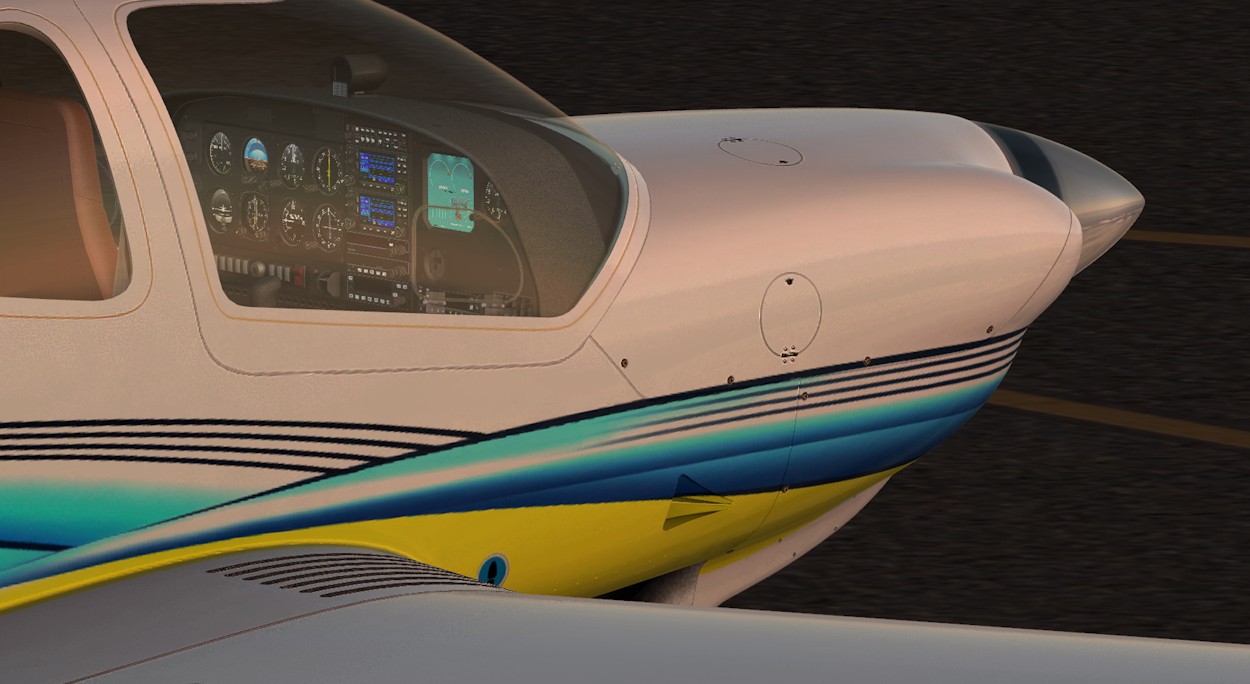 Dusky Shine |
 No Wheel Fairings |
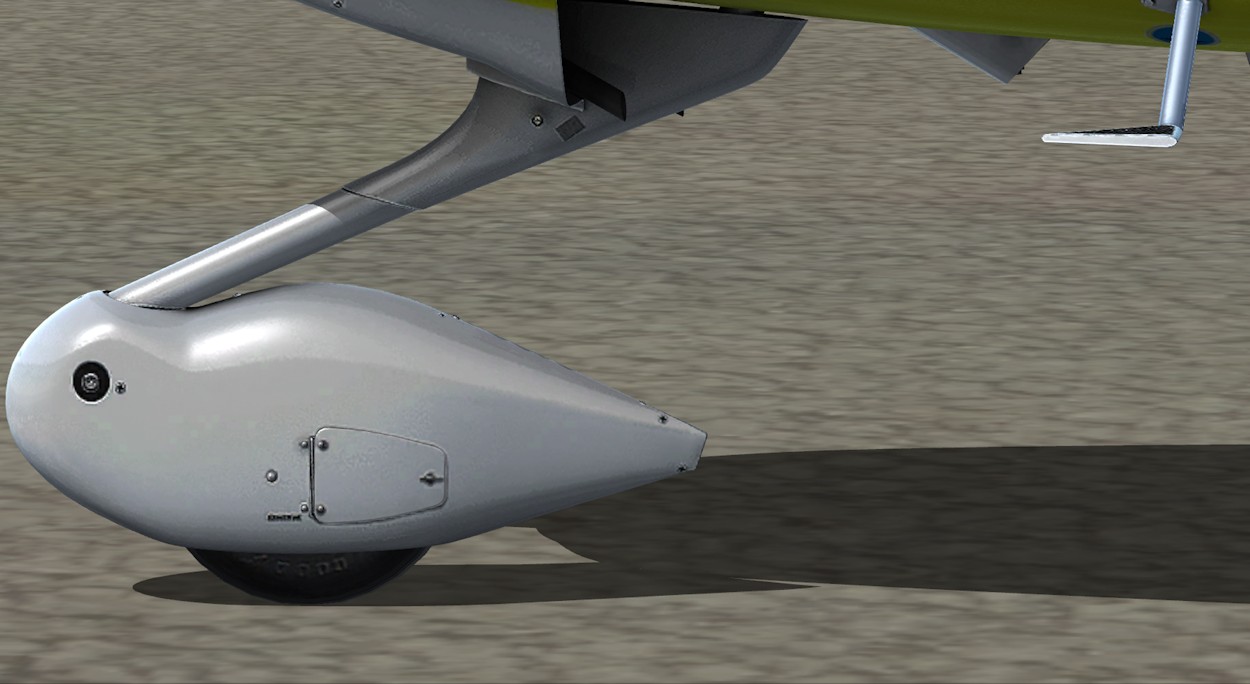 Wheel Fairings |
The interior has also been given the Alabeo seal of quality and style. Every last detail having been thoroughly well designed and modelled. The leather seats and leather cowling over the stick look like you should be able to smell the tanning. The grain and pattern in the leather is really superb, including the stretch of the leather cowl as you operate the stick column - very smooth. The attention to detail on the instrument panel has also been modelled to exacting precision and real world quality. The little touches, like the instrument reflection and scuff marks on the carpets, all add up to a more realistic look and feel to the cockpit whilst having no detrimental effect on your frame rates. This all goes to making this one of the most realistic aircraft I have in my hangar today.
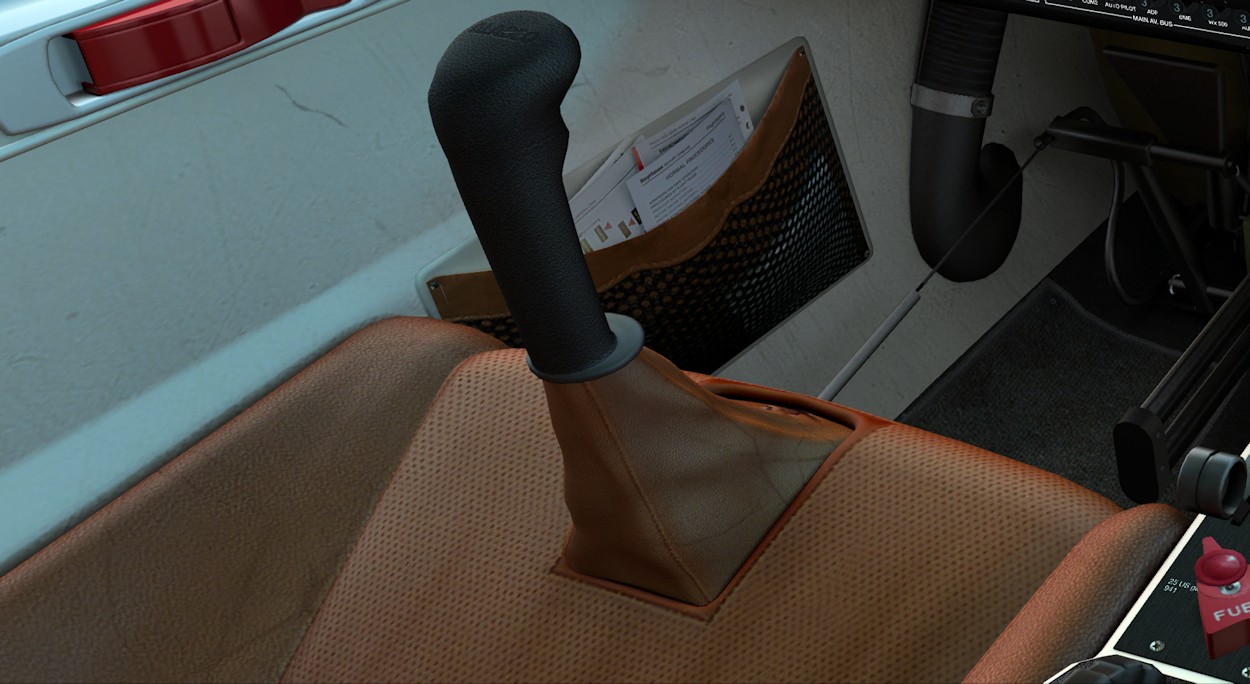 Pilot Stick |
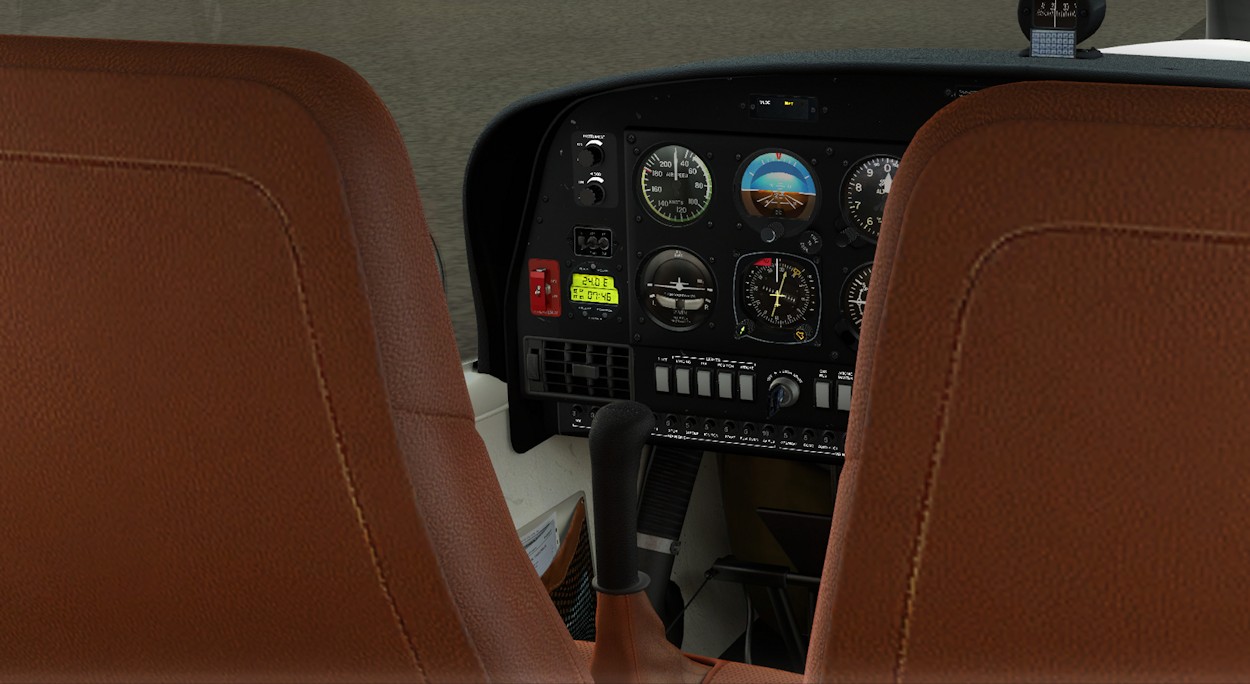 Seat Backs |
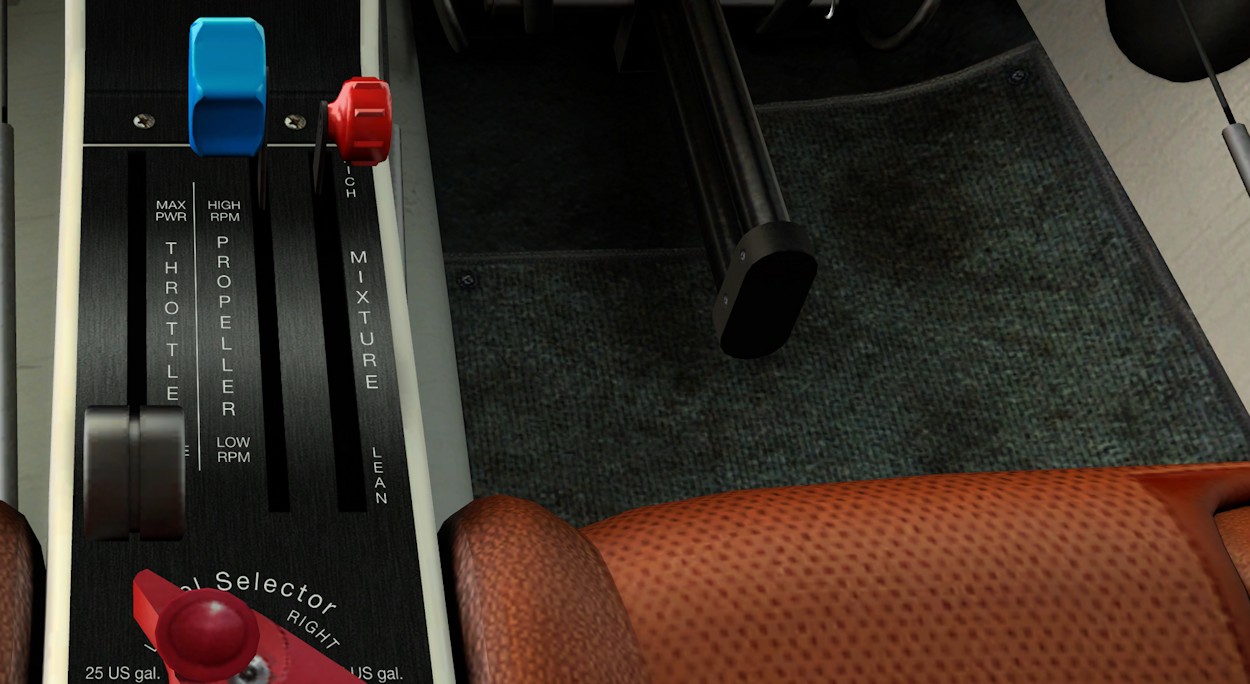 Scuff Marks |
 Instrument Reflections |
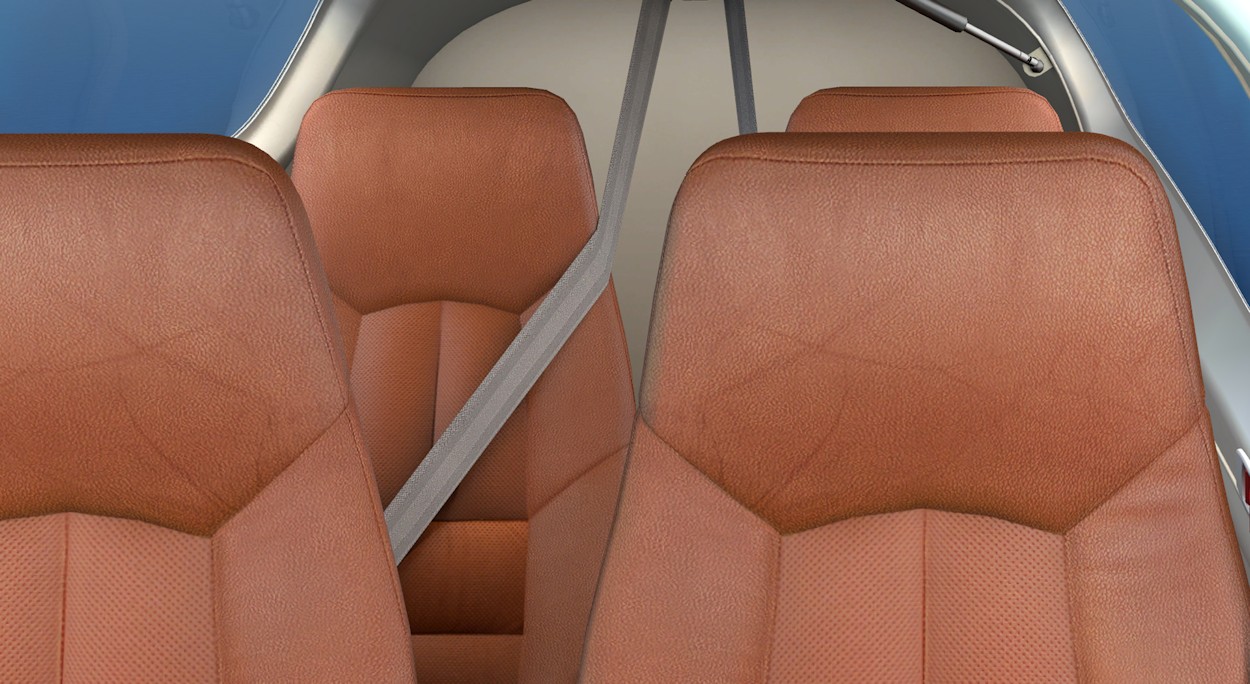 Seating Layout |
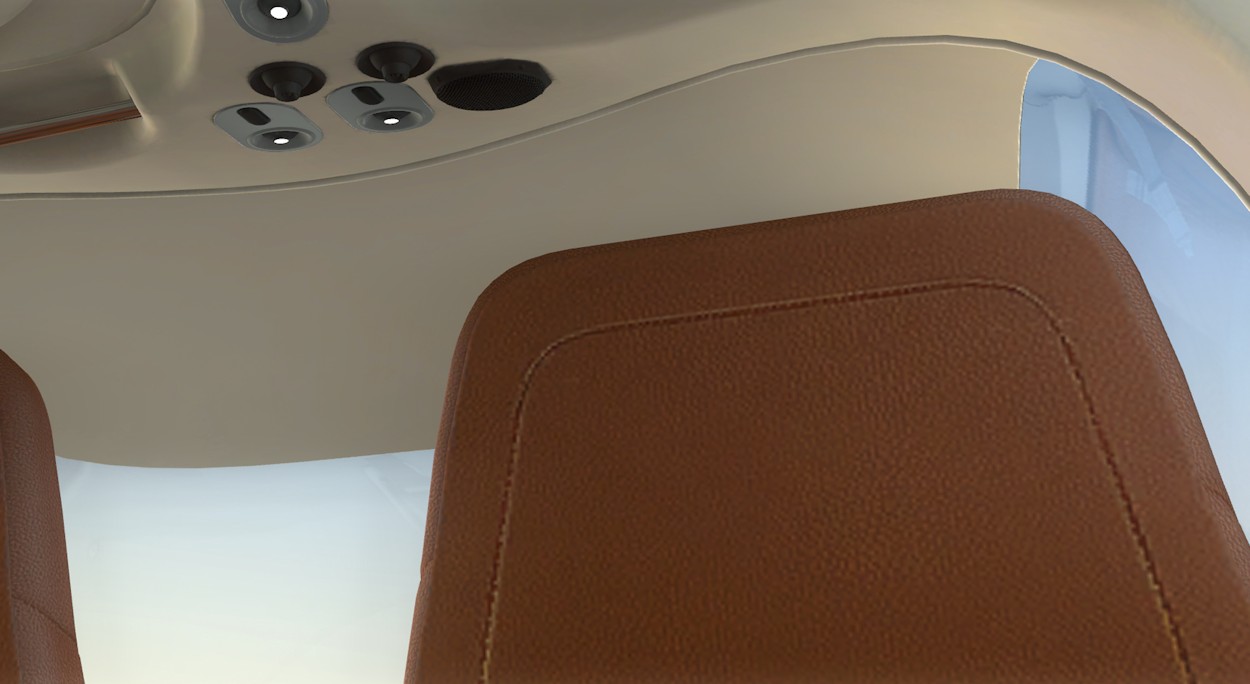 Cockpit Curves |
In earlier Diamond DA40 models, a traditional analogue set-up was used for the instrumentation and this is exactly the layout Alabeo have followed. They have recreated the instrument panel almost, if not, flawlessly. On the left panel you are faced with the fundamental 'six pack' with additional navigational instruments, whilst on the right hand side there is an electronic glass panel instrument depicting engine and electrical data. Below that instrument is another digital readout showing fuel levels.
 Left Panel |
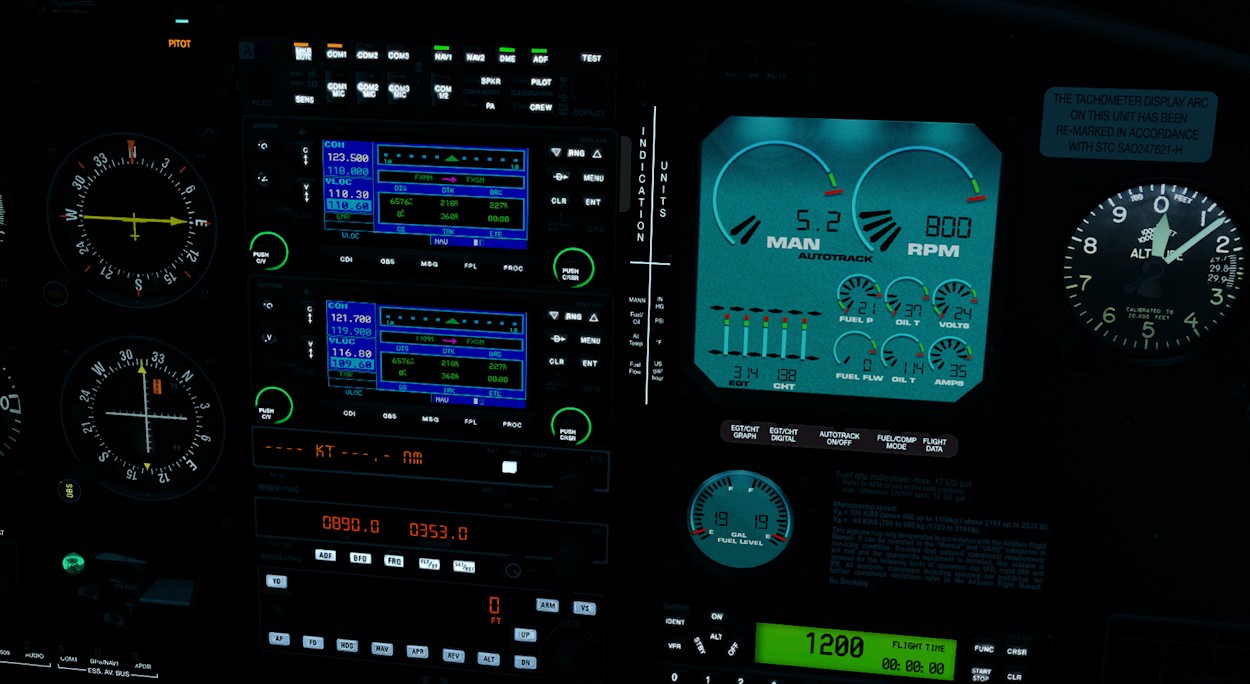 Right Panel |
Most of the buttons/switches are clickable throughout the cockpit, suffice to say, the ones that don't, you probably don't need anyhow. The two screen shots above show the instrument panel with the night lighting on. Again, the lighting effect adds to the real world feel to the cockpit.
There are two Garmin GNS 430 GPS units on the cockpit panel, each able to handle functions such as, communications, navigation and radio frequencies. There is also a PDF document included to get the user acquainted with them. Below, the two pictures show the panels taken from the included PDF document.
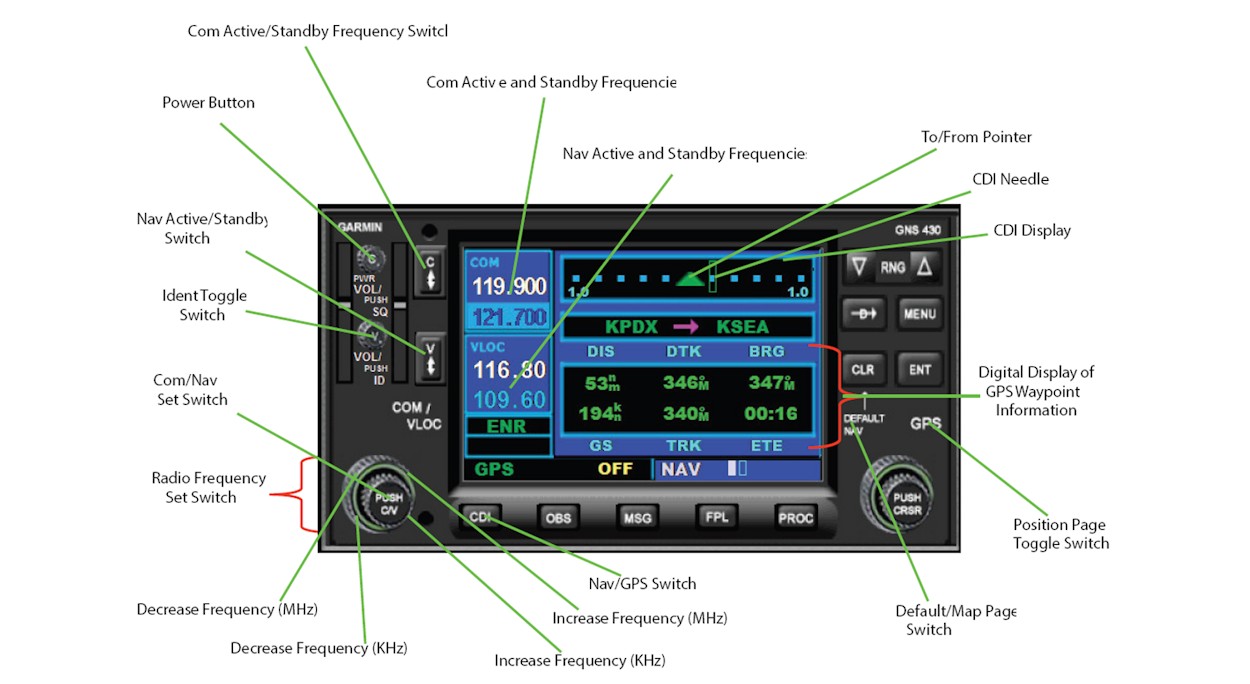 Alabeo Garmin GNS 430 GPS |
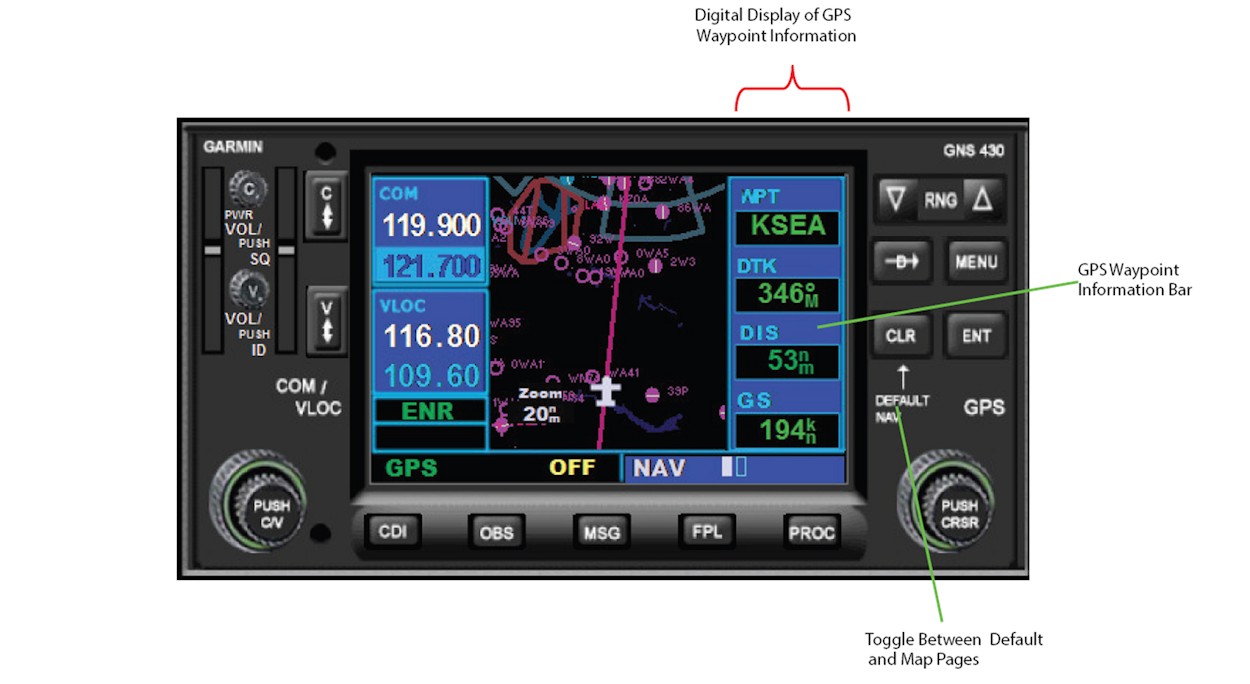 GNS 430 Navigation Map Page |
All the usual buttons, switches, knobs and handles within the cockpit are animated as you would expect, apart from a handful which I mentioned earlier. The main canopy opens upward and forward and the rear passenger canopy opens upwards and to the right side.
Lighting
All the usual lights are included, such as navigation lights, strobe light, taxi light, and landing lights, all of which have been given the Alabeo treatment which is a constant through all their aircraft.
Sounds
There are 26 sound files included in the form of .wav files. As I have never flown in a DA40, I can not begin to judge whether these are correct or not. Far be it for me to question if Alabeo have got the sounds right, when they get everything else right. To my ear the sounds are consistent with the type of aircraft the DA40 is. Judge for yourself is my advice.
Performance
Having completed the serious side, I was up for some fun, or at least to see what fun could be had with the DA40. All I can say is the DA40 does not perform aerobatic displays very well. A loop is possible but not very gracefully. This is nonsense as on the cockpit dash it clearly states, "All aerobatic manoeuvres including spinning are prohibited.". Do not try it, it is not pretty and you could risk damaging your beautiful aircraft.
I found no matter what weight I was carrying, whether I had passengers or not, the DA40 keeps veering to the right for some reason. This is compounded by the fact the DA40 has no rudder trim.
General characteristics:
• Crew: one pilot;
• Capacity: three passengers;
• Length: 26 ft 5 in (8.1 m);
• Wingspan: 39 ft 2 in (11.9 m);
• Height: 6 ft 6 in (1.98 m);
• Wing area: 145.3 ft² (13.5 m²);
• Empty weight: 1,755 lb (795 kg);
• Loaded weight: 2,645 lb (1,198 kg);
• Useful load: 890 lb (403 kg);
• Max. takeoff weight: 2,645 lb (1,198 kg); and
• Powerplant: 1 × Lycoming IO-360-M1A air-cooled, 4-cylinder horizontally-opposed piston engine, 180 hp (134 kW).
Performance:
• Cruise speed: 150 knots (173 mph, 279 km/h);
• Stall speed: 49 knots flaps down (56 mph, 91 km/h);
• Range: 720 nm (828 mi, 1,341 km);
• Service ceiling: 16,400 ft (5,000 m);
• Rate of climb: 1,120 ft/min (5.69 m/s); and
• Power/mass: 0.06802 hp/lb (110 W/kg).
Documentation
As I stated earlier, there are numerous PDF files supplied, all of which pertain to the various aspects of the DA40:
• Alabeo GNS430 Users Guide,
• Autopilot KFC225,
• Emergency Procedures,
• Normal Procedures,
• Performance Tables, and
• References.
All of the above are fully documented and cover everything you need to get the DA40 airborne.
Value for Money
Alabeo have come up trumps yet again. In my opinion, for a mere £16.56, you are getting another very nicely crafted Alabeo aircraft.
Simulator Performance
With FSX settings set fairly high, the DA40 performed beautifully. I had no adverse impact on frame rates and the DA40 does not take too much hard drive space, which is an added bonus.
Requirements
The Alabeo DA40 is for FSX and P3D. Other specified technical requirements are as follows:
• Windows Vista, Windows 7, or Windows 8 (32 or 64 bits);
• Microsoft Flight Simulator FSX with SP1 and SP2 (or Acceleration Pack), or Lockheed Martin Prepar3D Flight Simulator;
• Pentium V, 2GHz equivalent or higher, 2GB RAM, 512MB graphics card; and
• 520MB available hard disk space.
Review Computer Specifications
• Asus P8Z77-V motherboard;
• Intel i7 3.4Ghz 'Sandybridge';
• 16GB, DDR3, Corsair Vengeance, 1600MHz RAM;
• NVidia, GTX 570SC, 1280MB, graphics card;
• 500GB, WD Velociraptor HDD - OS;
• 128GB, Corsair Force 3 SSD - FSX;
• 1.5TB flight simulator add-ons;
• Matrox TripleHead2Go - 3 x 23" Acer LCD monitors; and
• Operating System - Windows 7, 64 Bit.
Conclusion
The Alabeo DA40's flight characteristics are true to the real world aircraft and the overall look and performance is remarkable. The cockpit is the hub of this little 'diamond', representing an older version of the prior to the use of the 'glass cockpit'. It is a beautifully rendered cockpit giving you the benefits of 'steam' instruments happily residing next to some digital instruments - the best of both worlds. If you like sporty aircraft, then the DA40 is for you.
Verdict
Pros:
Alabeo quality crafted exterior and interior.
Realistic modelling and characteristics.
Full documentation.
Superb value for money.
Cons:
Tendency to veer to the right whilst in flight.
| Scores: |
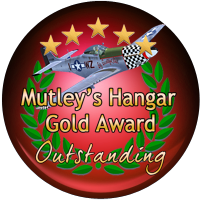 | |
| ● External Model: | 10/10 | |
| ● Internal Model: | 10/10 | |
| ● Sounds: | 10/10 | |
| ● Flight Characteristics (does it fly by the numbers): | 9.5/10 | |
| ● Flight Dynamics (does it feel like what it looks like): | 10/10 | |
| ● Documentation: | 10/10 | |
| ● Value for Money: | 10/10 |
Alabeo's DA-40 Aircraft achieved a Mutley’s Hangar score of 9.9/10, with an "Outstanding" and a Mutley's Hangar Gold Award. |
